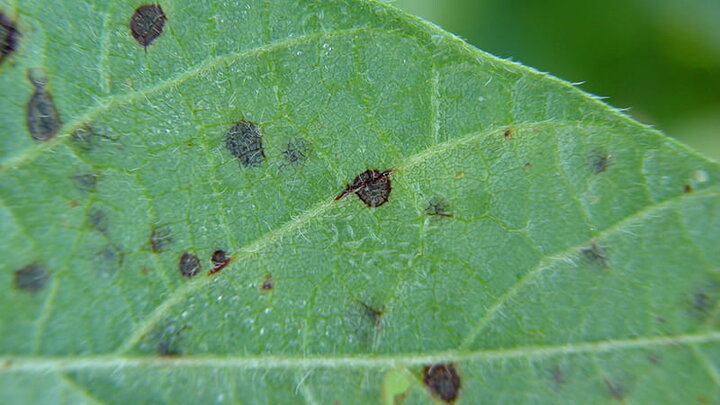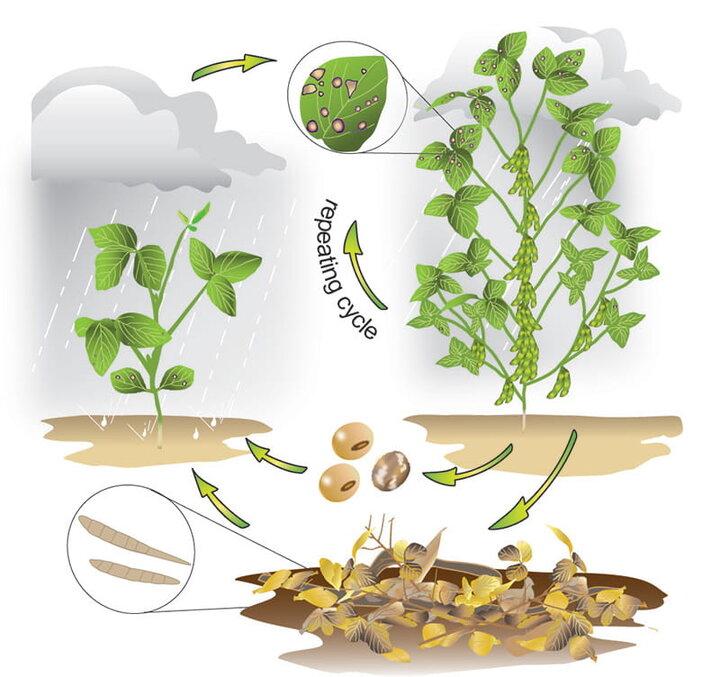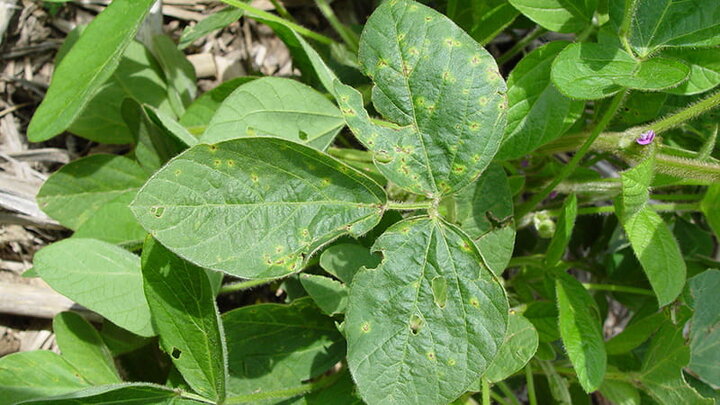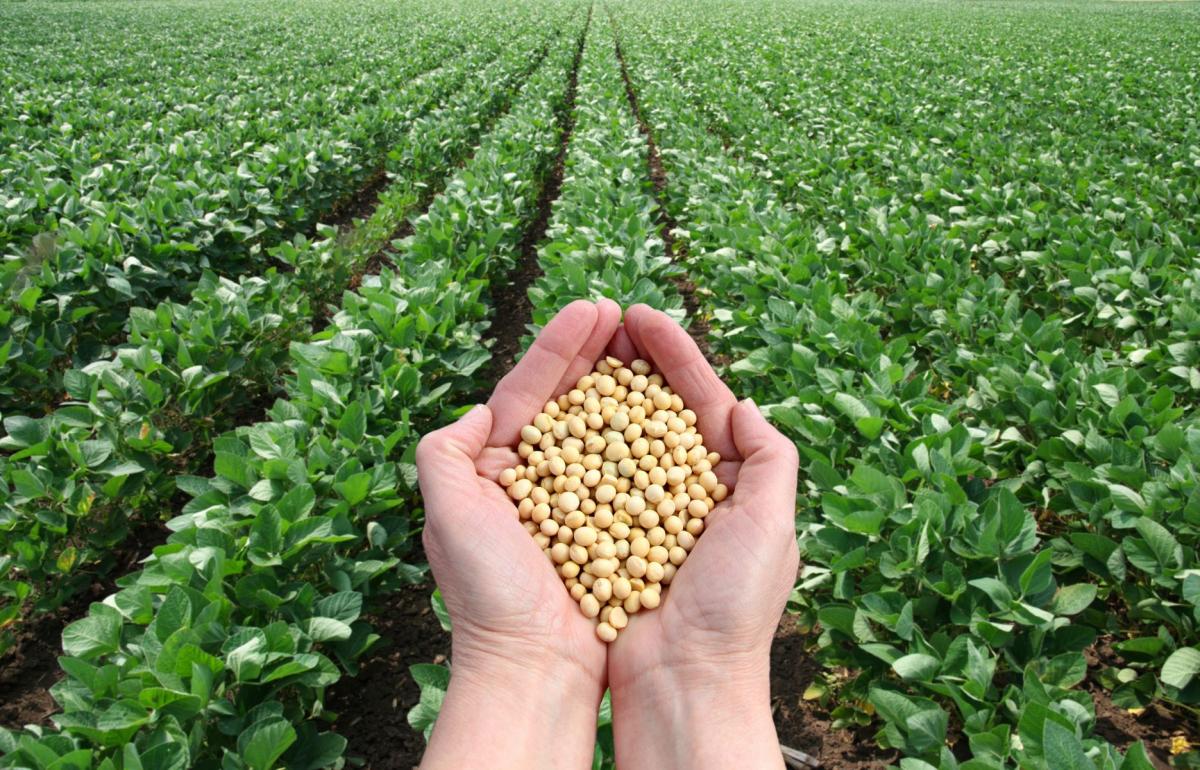Plant Disease: Frogeye Leaf Spot and Bacterial Blight
Frogeye Leaf Spot
Frogeye leaf spot is a foliar fungal disease caused by Cercopsora sojina. This fungal disease is residue borne but is also widely spread through wind from field to field. Disease development is favored by extended periods of wet weather throughout the growing season.
Infection can occur at any stage of soybean development but generally is observed after flowering. Initial symptoms are small yellow spots on the leaves. As the disease progresses, the lesions enlarge to about ¼-inch, with the centers being gray to brown in coloration and a reddish-brown to purple border (Figure 1). On the underside of the leave, lesions appear to have tiny dark “hairs” which are visible with a hand lens (Figure 2). These “hairs” are the spores of the fungus. Small lesions may coalesce to form larger, irregular spots on leaves. In severe infections, premature leaf drop along with stem and pod infections occurs. Lesions on pods are reddish brown, may appear shrunken and or circular to elongated in shape. Older lesions on pods become brown to dark gray, usually with a narrow dark brown border. Figure 3 shows the disease cycle for frogeye leaf spot.



Frogeye Leaf Spot Management
Genetic Resistance
There are wide selection of varieties available with frogeye resistance.
Crop Rotation
Rotating to a non-host crop such as corn or small grains reduces inoculum levels for the next growing season.
Tillage
Incorporation of plant residue increase decomposition rate of the soybean residue and reduces inoculum levels.
Fungicide
Fungicide applications have been shown to be effective in management frogeye leaf spot. To determine if a fungicide application is required, regular scouting and disease pressure is critical. Research has shown that fungicide applications are not beneficial once soybeans reach R5 growth stage. Incorporation of a resistance management strategy is critical with the development of fungicide resistance with this pathogen.
Bacterial Blight
Bacterial blight is a foliar bacterial disease caused by Pseduomonas syringae pv. glycinae. This bacterial disease overwinters in plant residue.
Outbreaks of bacterial blight are commonly observed following rainstorms with high winds and/or hail. The wounds created from the storm allows an opportunity for the bacteria to infect the plant. Disease development is favored by cool, wet weather (70-80°F) with infection occurring at any time during the growing season. With disease development occurring following crop injury, the symptoms are more prevalent on the upper portion of the canopy.
Symptoms include angular lesions, which appear as small yellow to brown spots on the leaves (Figure 4). A yellowish-green “halo” will appear around the edge of the lesion. The centers of the spots will turn a dark reddish-brown to black in coloration and eventually dry out. As the center of the lesion dries out, it will eventually fall off the leaf and the foliage will appear ragged.

Bacterial Blight Management
Genetic Resistance
Fields with a history of bacterial blight should consider using resistant varieties.
Crop Rotation
Planting a non-host crop such as corn or small grains reduces inoculum levels.
Tillage
Incorporation of crop residue will reduce the amount of inoculum present the next growing season.

Nebraska Soybean Board graciously provided the funding for the Soybean Management Guide.
Course authored by:
Amy Timmerman, extension educator; Aaron Nygren, extension educator; Brandy VanDeWalle, extension educator; Loren Giesler, Plant Pathologist Department head; Ron Seymour, extension educator; Keith Glewen, former extension educator; Charles Shapiro, emeritus extension soil scientist; Amit Jhala, extension weed specialist; Don Treptow, former graduate student
